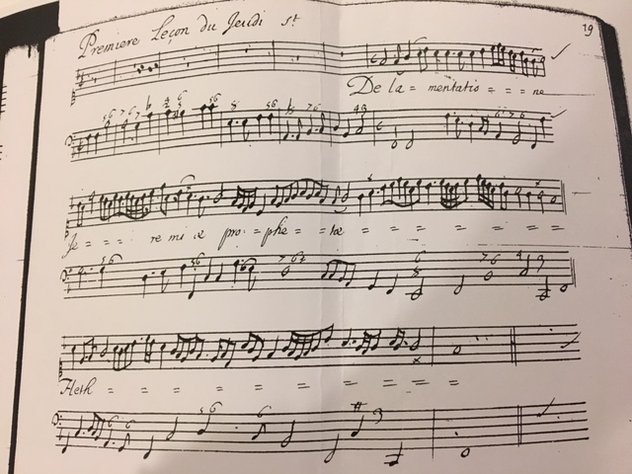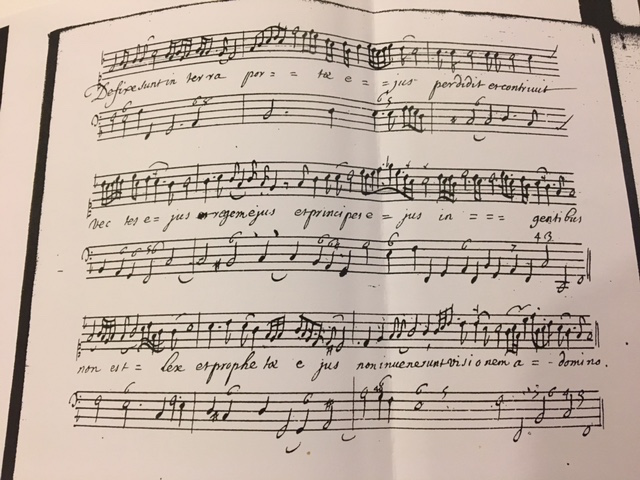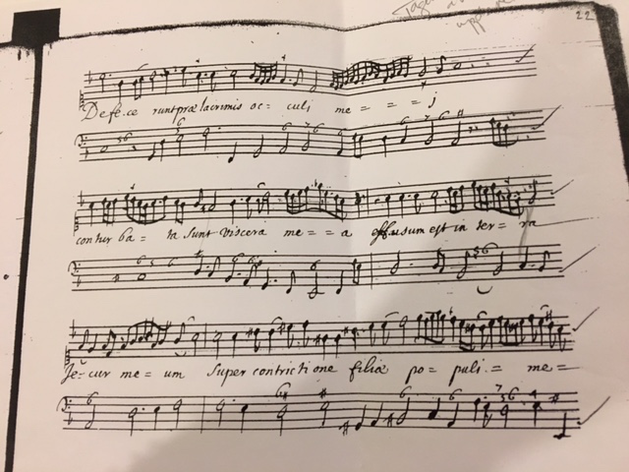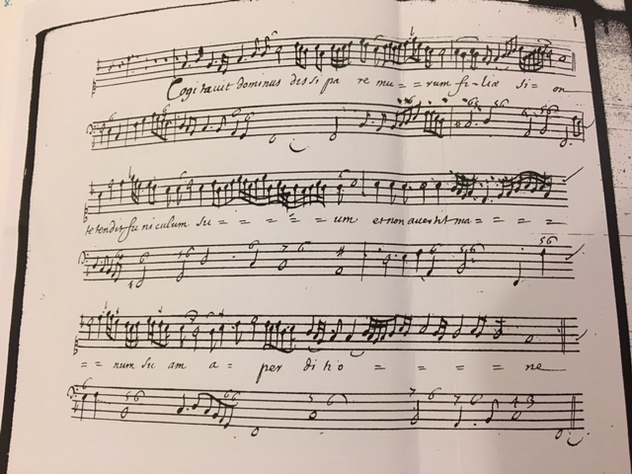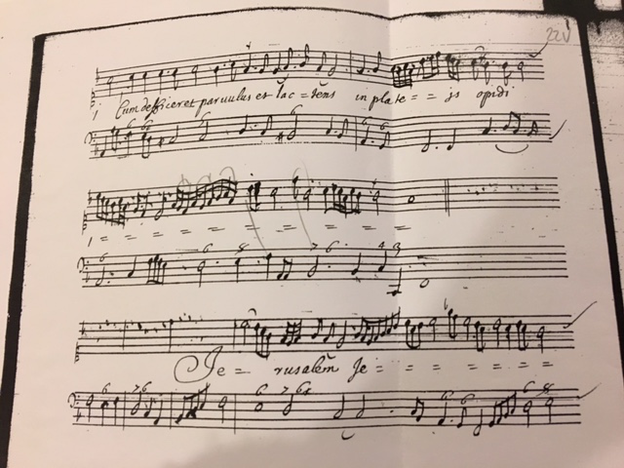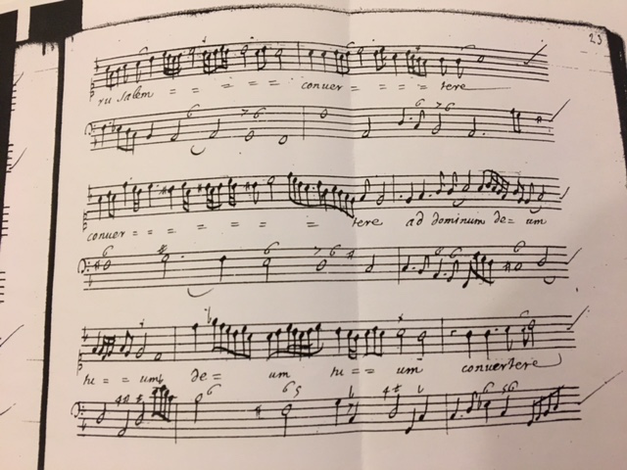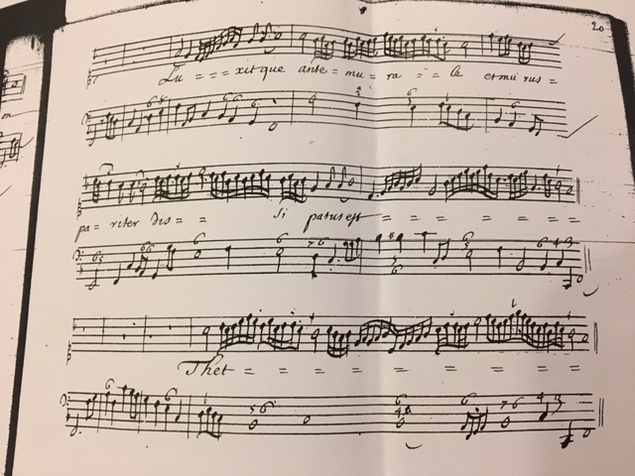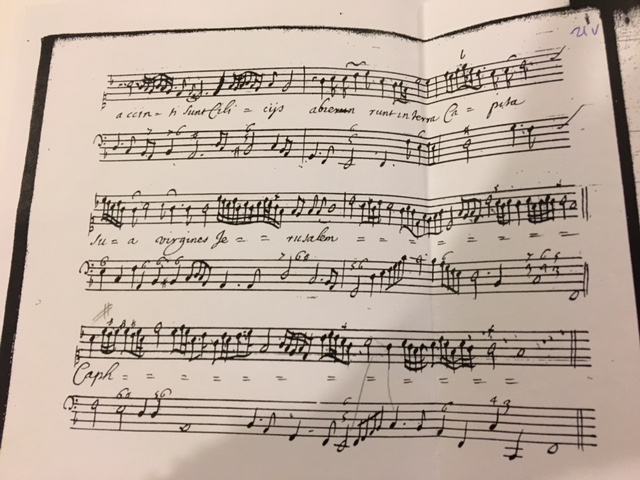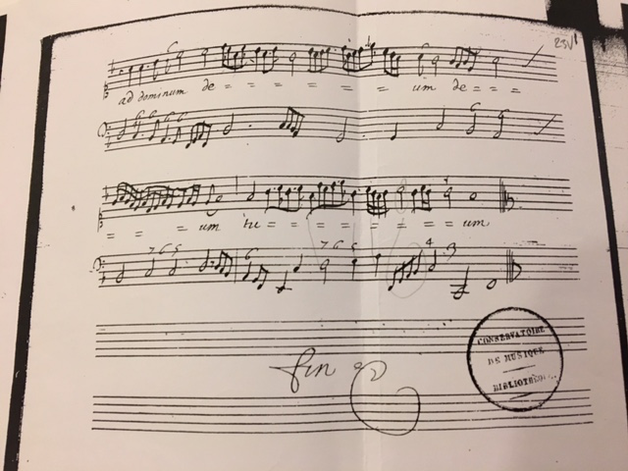This study performs a lesson set in the Shadow of Death (Leçons de Ténèbres) , that could have been staged in any spacetime. The first version was performed around 1660 in Paris for the court of the king, as a musical meditation during the Easter week.
Here starts the first lesson of the Holy Thursday (set to music by French composer Michel Lambert, 1610-1696):
Listen to the lamentation of the Prophet Jeremiah. He tells us about the disastrous events in a city on the edge of hell and paradise. Listen to the tears of children, women and poor. Their voices heard, yet inaudible. Their hopes of another kind. Hoping for a return. A turning point.
The voice of the prophet is ‘content’. A poet’s non-describing spell of what can never be recalled. It is then. It is now. It is matter. It is real. A form always to appear.
A voice of an Other ‘insigns’ an audience of an historical event. Set in a different spacetime.
A disastrous moment, happening over and over again. This voice is not the one of the prophet, nevertheless it echoes ahead of the moment when actually expressed. I “hear the voice without voice”. I “see the form without form” (Kitaro, in: Uehera 2009:154)
Two voices intermingle in a common spacetime. Or, they rather intra-mingle, entangle and feed on to one another. The voice of content tells of sorrow, the voice of expression moves in the shadow of what has already been met and seen.
There is no beginning and no end of the two vocal lines. There are only “points of intervention or insertion” where meaning cuts the story wide open. What appears from inside is an immanent third voice narrating a line of varied truths. It is not any longer an act of interventions, as in ”inter-vening, operating in the other.” The third voice is the assemblage of the two. As within the third voice, a reconfiguration occurs (Barad 2014) of all acts and passions as agential and vibrant.
The sound of the third voice recalls the sound of a dying bird. Over-vocalizing. Vibrating. Extending. Suspending. Sounding on the very edge. Lamenting the eternal ending of all life on earth.
“ By placing all its components in a continuous variation, music itself becomes a superlinear system, a rhizome instead of a tree, and enters the service of virtual cosmic continuum of which even holes, silence, ruptures, and breaks are a part.” (Deleuze & Guattari 2012:106)
The third voice is the spacetime of that-yet-to-be. A voice acting through passionate sincerity. A voice moving with an indeterminate sense of real.
While writing the sound of the shadows, vocality performs an investigation into the expression of devotion, questioning the possible landscape of three intra-mingling concepts: Basho (Kitaro 2012), Zone of indetermination (Deleuze & Guattari 1994) and Je-ne-sais-quoi (Scholar 2005, Belgrano 2011). What becomes audible is a vocal line accompanied by the etching sound of a pen in motion or the tapping sound on a computer. There seem to be neither a beginning or an end in the vocal choreography of intra-acting disasters and chromatic deceptions.
